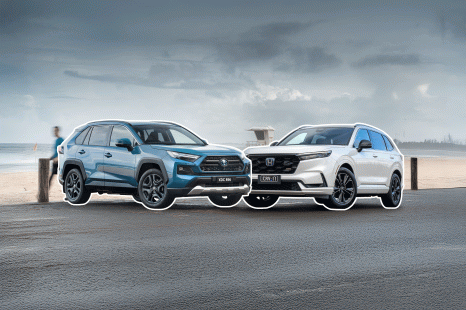

Andrew Maclean
Honda CR-V RS e:HEV vs Toyota RAV4 Edge Hybrid: Spec battle
12 Days Ago
The Audi Q5 55 TFSI e plug-in hybrid can provide up to 55km of claimed EV range. It also produces more power than the SQ5.
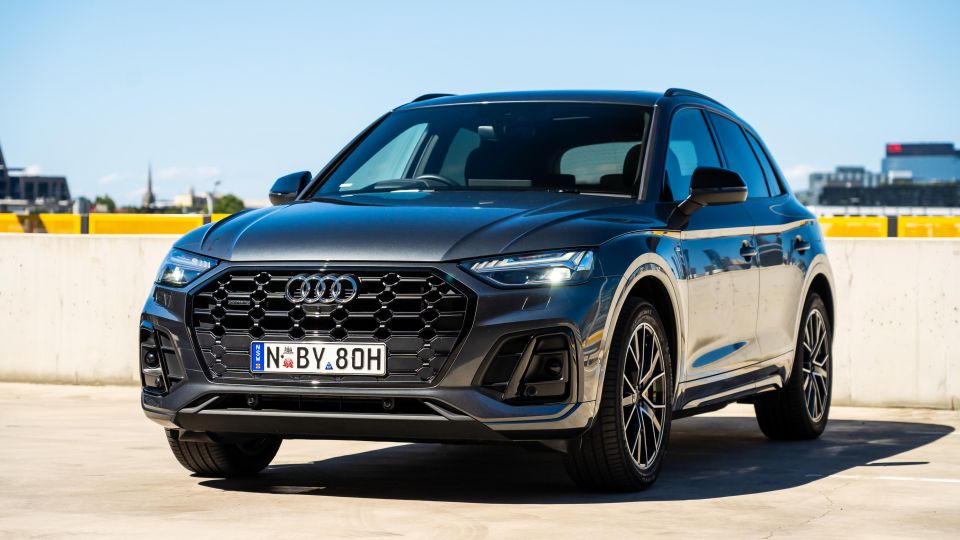
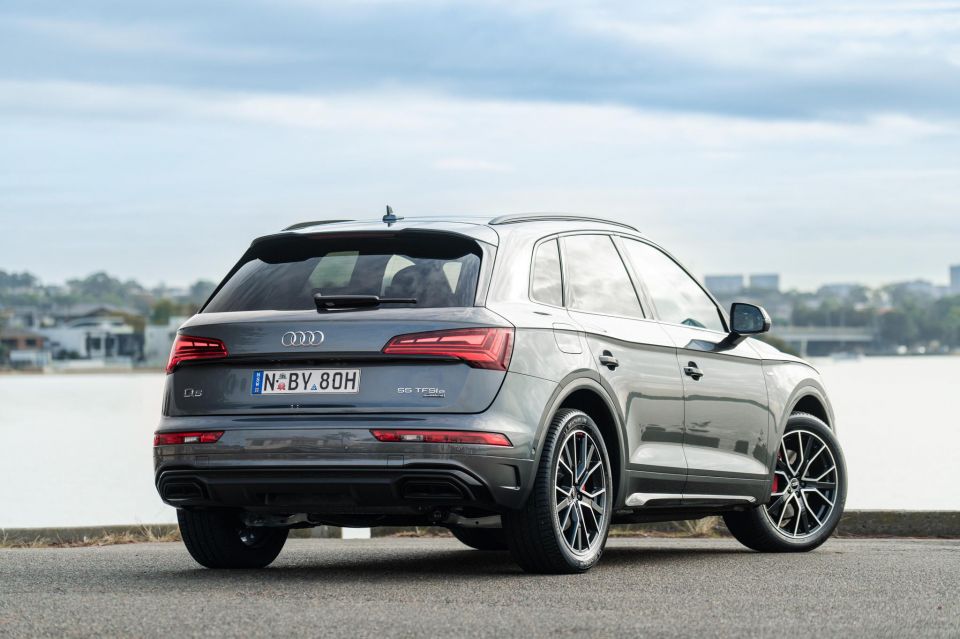

Quickly see how this car stacks up against its competition. Select any benchmark to see more details.
Where expert car reviews meet expert car buying – CarExpert gives you trusted advice, personalised service and real savings on your next new car.
Plug-in hybrids are still are heavily-contested discussion point at CarExpert, as for some they meld together being able to drive on electric power in the city with the ease of use of using a combustion engine for longer drives.
For others however, they find it hard to look past how you’re lugging around either a petrol engine or large battery pack for no reason apart from adding weight and complexity to the vehicle.
On test here is the 2024 Audi Q5 55 TFSI e quattro S line which has technically been around since 2019 in pre-facelift guise but only launched locally last year.
It spearheaded the company’s reintroduction of plug-in hybrid technology to the Australian market, following the 2015 Audi Q3 e-tron and 2017 Audi Q7 e-tron plug-in hybrids which both had short runs Down Under.
Is the Audi Q5 at its best with a plug-in hybrid powertrain? Read along to find out.

2024 Audi Q5:
2024 Audi Q5 Sportback:
Prices exclude on-road costs.
Including all the optional extras equipped to our tester however, this brings the total to $119,190 before on-roads.
To see how the Q5 compares to its rivals, line it up with any of its rivals using our comparison tool.
Walking up to and unlocking the Audi Q5 55 TFSI e quattro plug-in hybrid is pretty special, as our tester was fitted with the optional Technik package that adds matrix LED headlights, along with dynamic front and rear indicators.
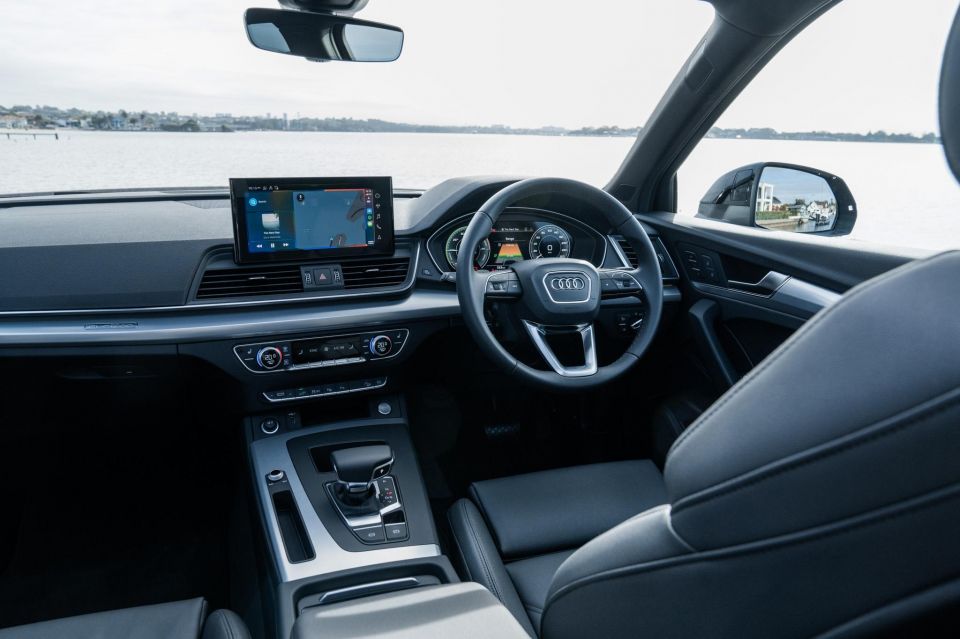
The headlights and tail lights have an unlocking sequence that’s hypnotising to watch. I particularly liked watching the tail lights as different sections turn on sequentially.
Hopping in the Q5 55 TFSI e there is a bit of a high lip which means you’ll need to lift your feet a bit to get in without brushing your shoes on the side sills.
Once you’re in you are presented with sport seats up front that have black leather-appointed upholstery. If you want Nappa leather upholstery you’ll have to opt for the coupe-like Sportback version.
Despite not being Nappa leather, the regular Q5 55 TFSI e’s leather-appointed upholstery is still very soft. The driver’s seat is also very comfortable, making you feel like you’re hugged in and supported from every angle.
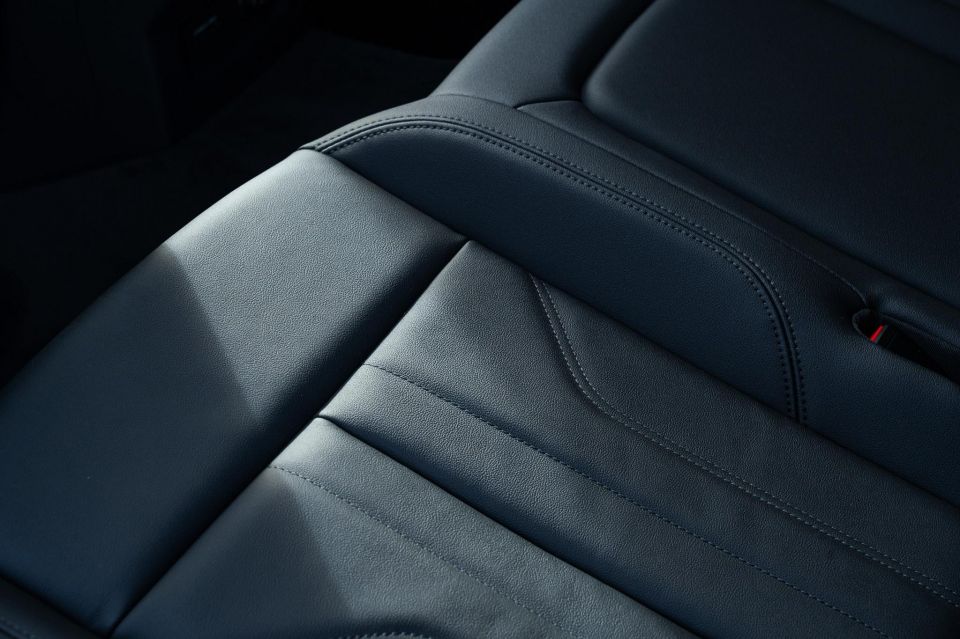
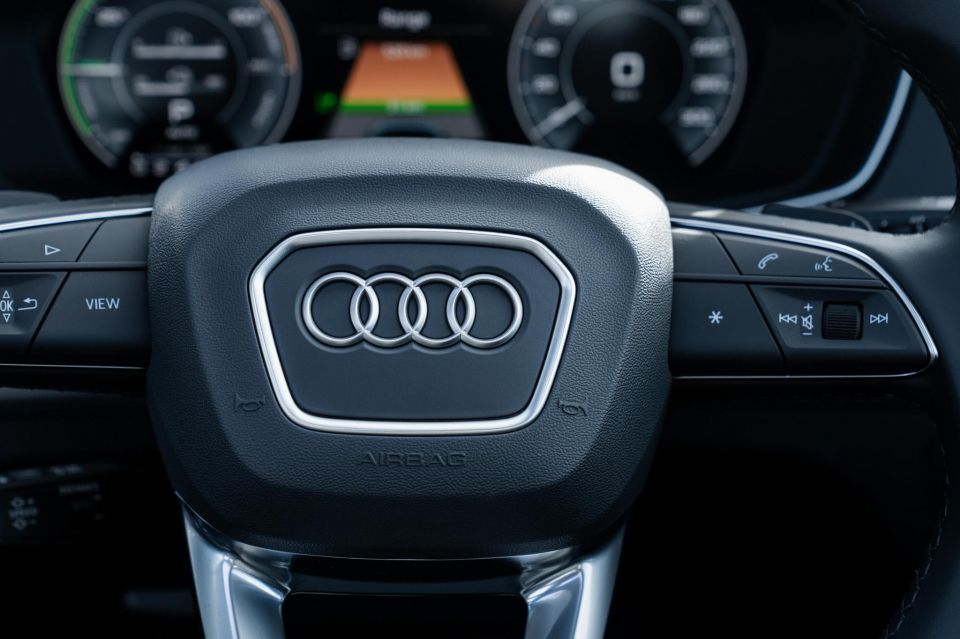
Both front seats are electrically adjustable with a manually extendable thigh support, while the driver’s seat also receives four-way lumbar and memory.
In addition, the front seats are heated which is handy on cool Melbourne mornings. What’s interesting however is the front seats aren’t ventilated, and the feature can’t even be optioned. That’s something that doesn’t sit well with me given our tester costs almost $120,000 before on-roads.
Ahead of the driver is a steering wheel that has a thin rim yet is surprisingly large. It’s a leather-wrapped unit that’s really nice to hold.
All the buttons and scroll wheels on the steering wheels are so tactile and damped. They’re probably the most rewarding steering wheel switches I’ve ever used.
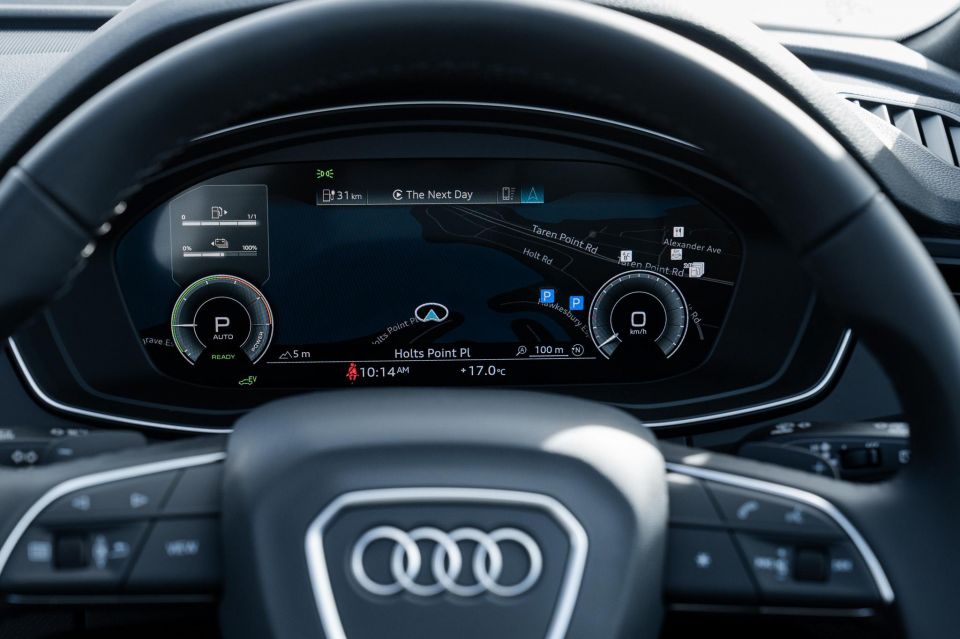
What might throw people at first are all the cruise control functions are on a standalone stalk. I’ve become so used to seeing the cruise controls on the steering wheel and it’s somewhat refreshing to see minimal buttons on the Q5’s steering wheel.
Like virtually all cruise control stalks its operation is very intuitive. My favourite function was the slight and full flicks of the stalk resulting in either single-km/h or multiple-km/h speed changes.
Behind the steering is a 12.3-inch Audi virtual cockpit that’s crystal clear and high resolution. There are so many different views to choose from that continually make the driving experience feel fresh.
I liked being able to have the satellite navigation map take up the full width of the digital instrument cluster, though I wish it displayed my navigation route when using smartphone mirroring. It’s worth noting if you use the in-built satellite navigation, the route will show up.
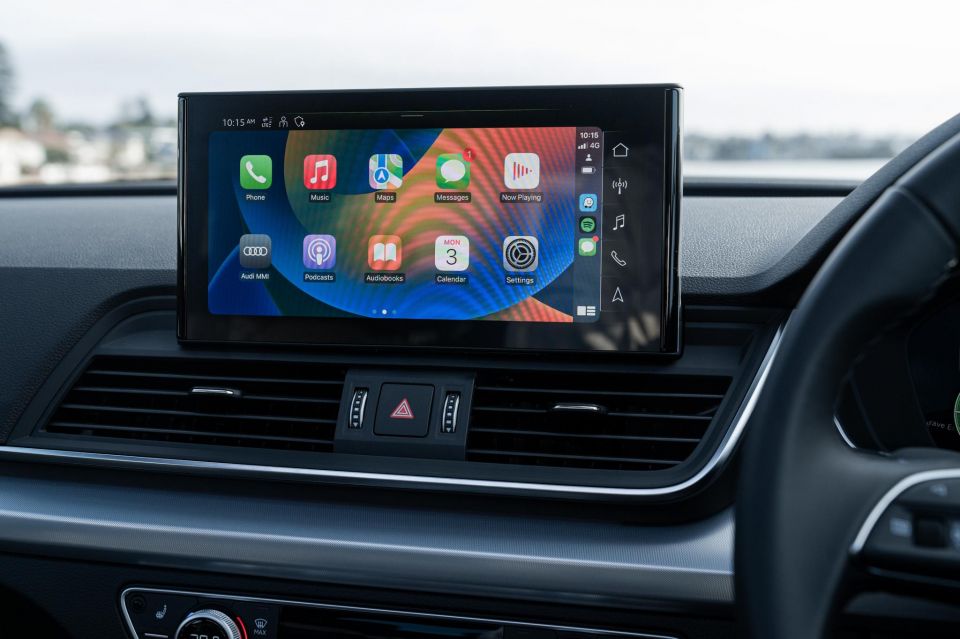
Above the dashboard is a head-up display that’s also a part of the optional Technik package. Disappointingly this head-up display doesn’t project much information onto the windshield apart from a digital speed readout. It can display cruise control info and built-in navigation instructions too, but that’s about it.
Moving across, the Audi Q5 55 TFSI e comes with a 10.1-inch touchscreen infotainment system that in 2024 is starting to look a little on the smaller side, especially given its competition and price point.
Despite being a little small the touchscreen appears to have plenty of processing power. This means it boots up incredibly fast and is really snappy at loading new content.
Not every car infotainment touchscreen is like this, but the Q5’s is just like using a smartphone or tablet. Scrolling is incredibly easy and you don’t have to put too much pressure for it to recognise a touch input.
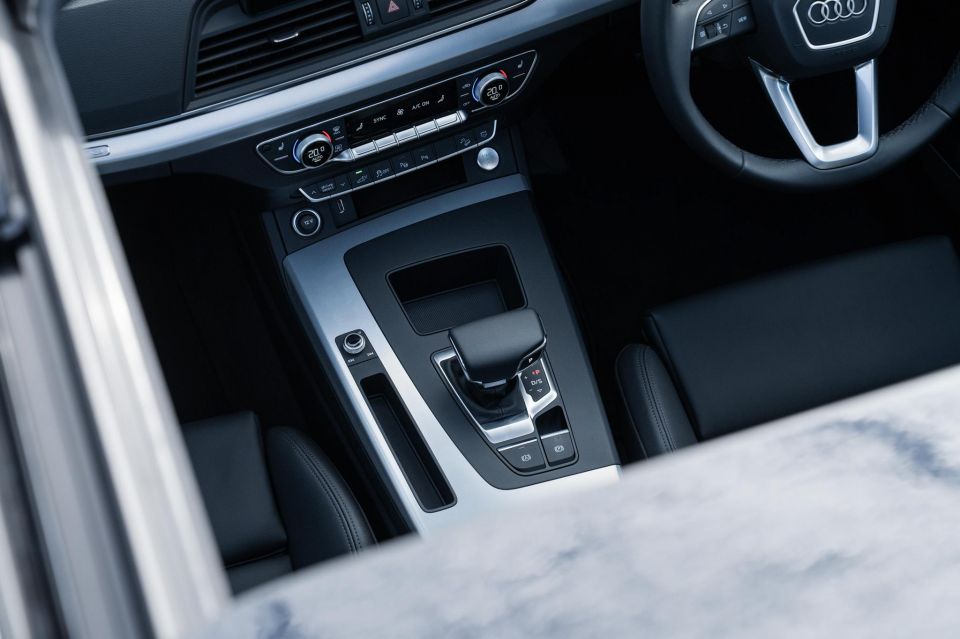
As standard there are wired and wireless forms of Apple CarPlay and Android Auto. I elected to use wireless Apple CarPlay with my iPhone 15 Pro Max for the majority of my time with this tester.
Like a number of Volkswagen Group vehicles, I experienced some issues with wireless Apple CarPlay. There would be moments where it would stutter and other points drop out for a second or two. For one particular trip wireless CarPlay refused to connect whatsoever, forcing me to resort pulling out a USB cable.
On the centre console there’s a wireless phone charger, which is fairly common. What’s unusual however is this wireless charger is on a sliding shelf that can either cover the cupholders or go under the centre console armrest.
Even more unusual was the wireless charger actually charged my phone. A lot of cars struggle to charge my phone, occasionally resulting in my phone overheating.
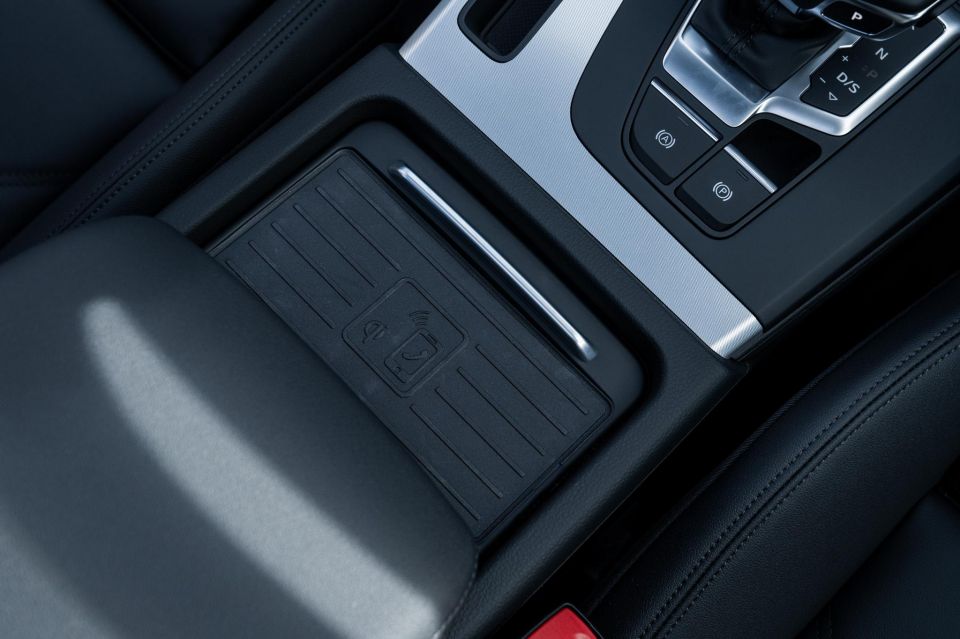
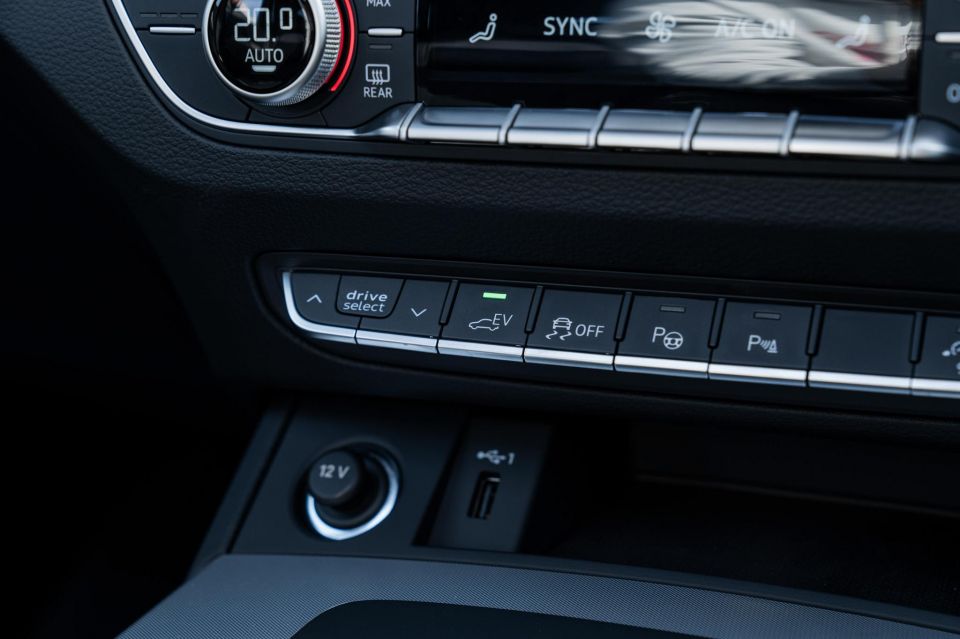
Looking around the cabin the Q5 is a great example of understated luxury. There are no real flashy bits of technology, but rather beautifully designed finishes that feel well thought out and premium.
One of these finishes includes the climate control setup which is thankfully still a physical setup with dials and switches, rather than being a sub-menu in the touchscreen. I love how tactile and satisfying the switchgear feels to use, and also how the switches display more information once it detects a finger on it.
As standard the Q5 55 TFSI e doesn’t come with any form of piano black trim. You’re able to option it but I think you’d have to have rocks in your brain to spend $520 on something that will look dirty and get scratched within a week.
The majority of the main touch points are soft, though once you venture down further in the footwells and closer to the windscreen there are harder plastics. I was particularly surprised at how cheap the glove box opening mechanism felt.
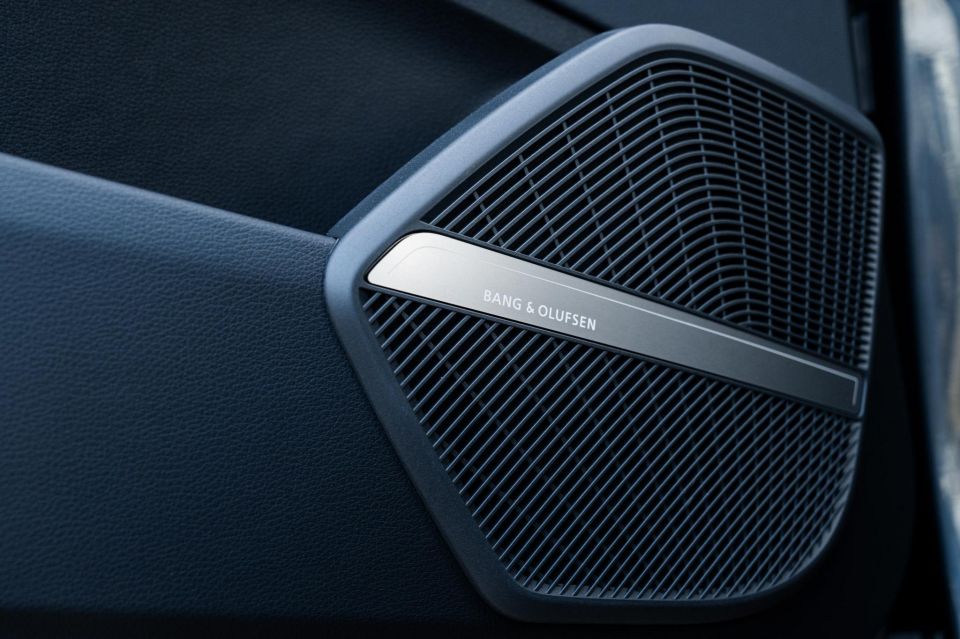
On the flip side however, the ratcheting centre console lid feels sleek and premium. It’s really nice being able to dial in your driving position to perfection.
The optional 19-speaker Bang & Olufsen sound system is fantastic. It’s among my favourite sound systems I’ve experienced to date. The sound system can deliver booming bass, yet also crystal clear treble that seemingly doesn’t distort no matter how loud you dial up the volume.
Moving to the second row there’s an adequate amount of space for myself at a leggy 182cm behind my own driving position. Leg, head, shoulder and toe space aren’t earth shattering, but enough for you to get comfortable. Kids will have oodles of space.
The second-row bench is very comfortable and squishy, with the backrest reclining a touch. You could fall asleep in the second row very easily.
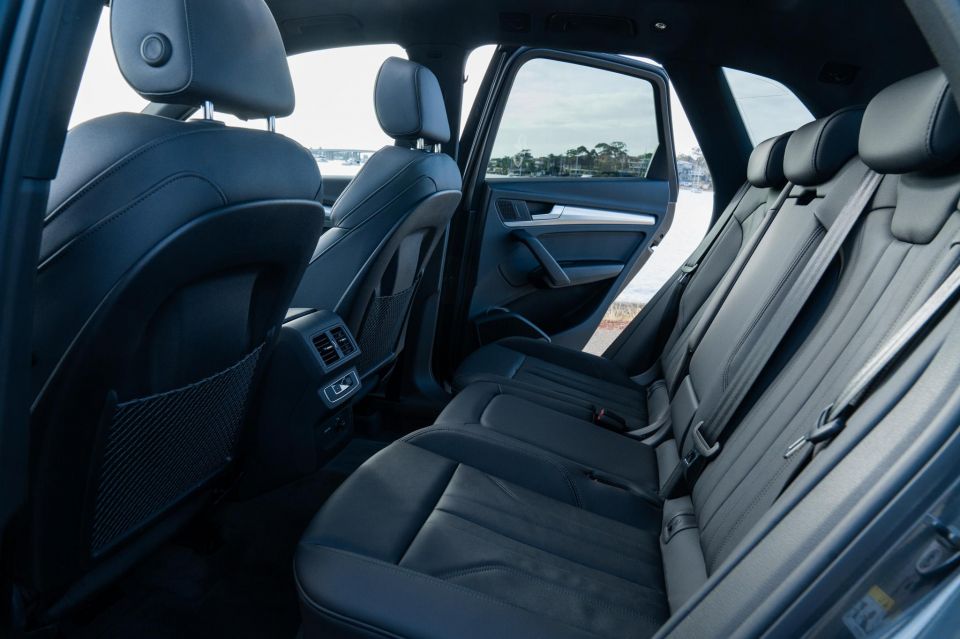

In terms of second-row amenities there are centre console-mounted air vents with a dedicated third-zone of climate, heated outboard seats, as well as a fold-down armrest with cupholders.
Despite the Q5 55 TFSI e having a largely dark cabin, it comes standard with a panoramic glass sunroof that helps to brighten it up and add a bit of ambience.
At the back there’s a powered tailgate with a hands-free kick function. This is handy if you’ve got your hands full and can’t reach the button to open the tailgate.
Our tester was equipped with the optional air suspension that allows you to lower down the rear end an inch or two. Although this doesn’t sound like a lot, it can mean you don’t have to lift heavy items quite as high.
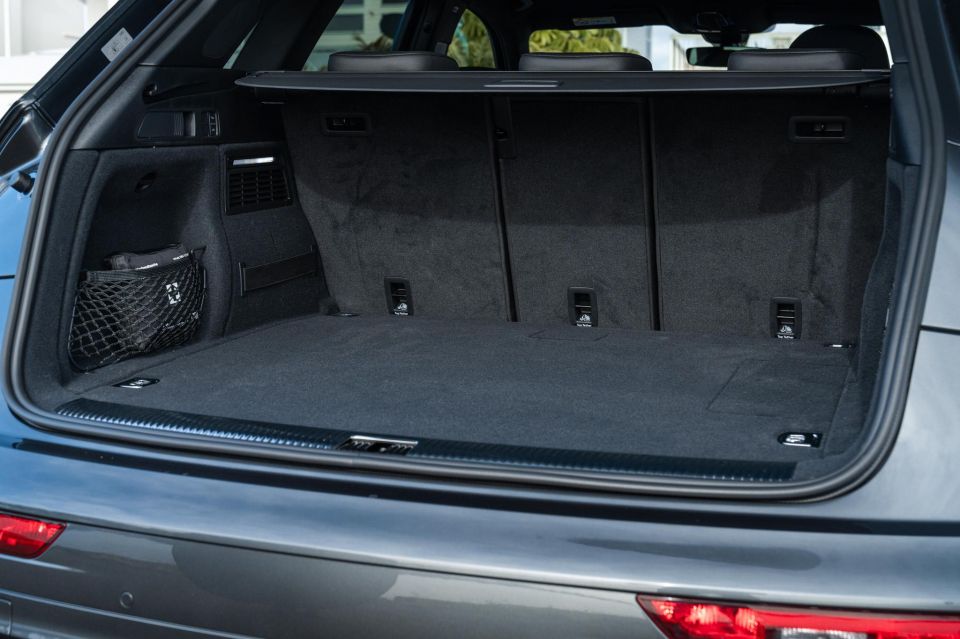
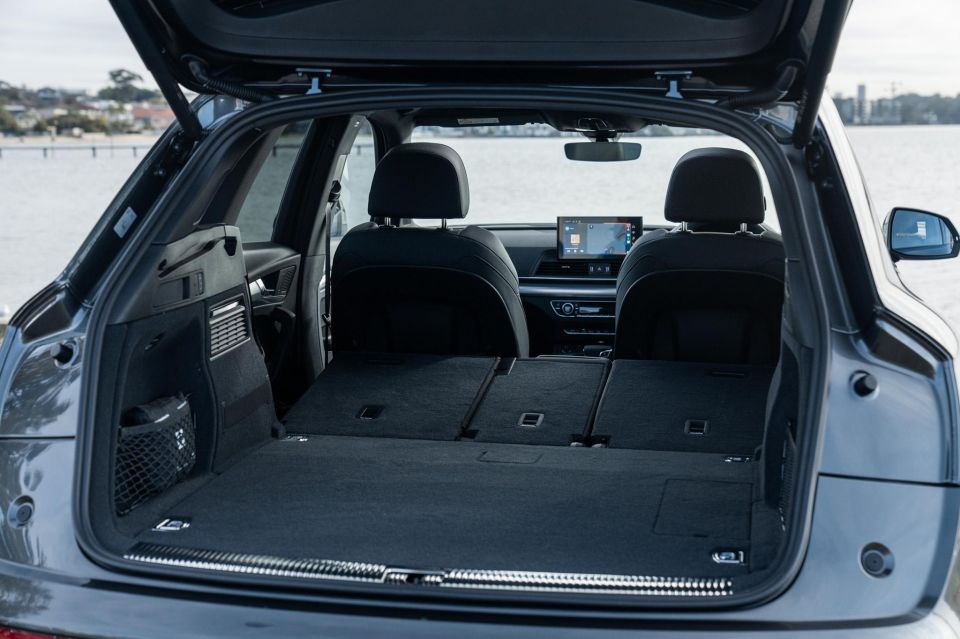
Boot space in the Q5 55 TFSI e is adequate but nothing to phone home about. Audi officially quotes 460 litres of boot space with the rear seats, upright and 1400 litres with the rear seats folded down.
A portion of the boot space is taken up by the charging cables as there’s nowhere else to store them. There’s no underfloor storage as that’s where the high-voltage battery is. Amenities in the luggage area include bag hooks, tie-down points, as well as hooks to fold the second-row seats down.
Like virtually all plug-in hybrids, the Q5 55 TFSI e doesn’t come with a spare tyre at all. Instead there’s only a tyre repair kit. This is something to keep in mind if you plan to venture out of the city and away from tyre shops.
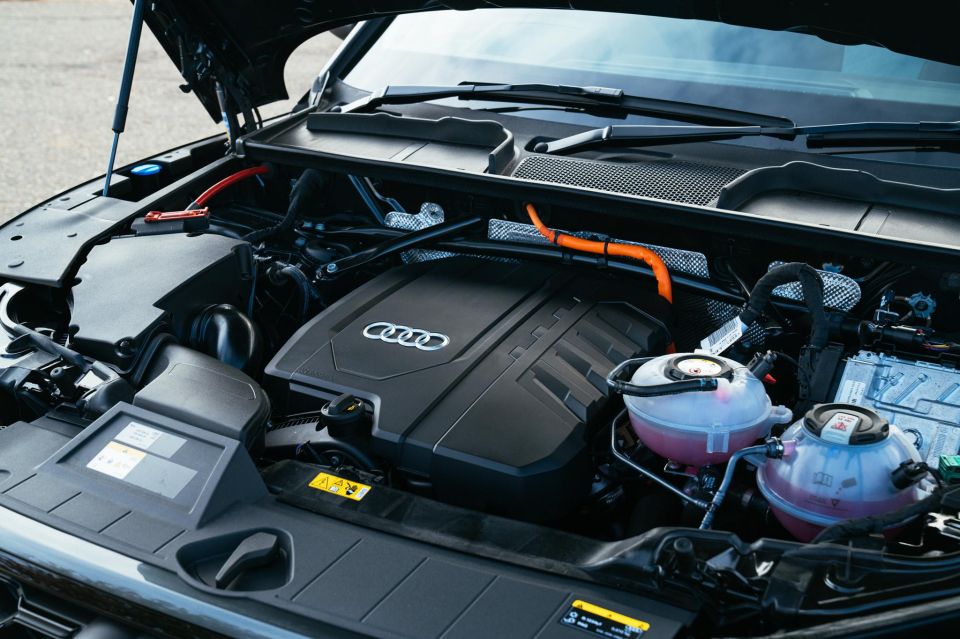
| Model | Audi Q5 55 TFSI e plug-in hybrid |
|---|---|
| Engine | 2.0-litre 4cyl turbo petrol |
| Engine power | 195kW |
| Engine torque | 370Nm |
| Electric motor power | 105kW |
| Electric motor torque | 350Nm |
| Total system power | 270kW |
| Total system torque | 500Nm |
| Claimed 0-100km/h sprint | 5.3 seconds |
| Transmission | 7-speed dual-clutch automatic |
| Driven Wheels | All-wheel drive |
| Weight | 2075kg (kerb) |
| Battery | 17.9kWh (gross) lithium-ion |
| Electric range | 55km (WLTP) |
| Fuel economy (claimed) | 2.0L/100km |
| Fuel economy (as tested) | 5.7L/100km (720km mixed driving) |
| Fuel tank | 54 litres |
| Minimum fuel requirement | 95 RON |
To see how the Q5 compares to its rivals, line it up with any of its rivals using our comparison tool.
Like I’ve mentioned in previous plug-in hybrid reviews, there are many different ways to drive this kind of car. It all depends on how you charge it.
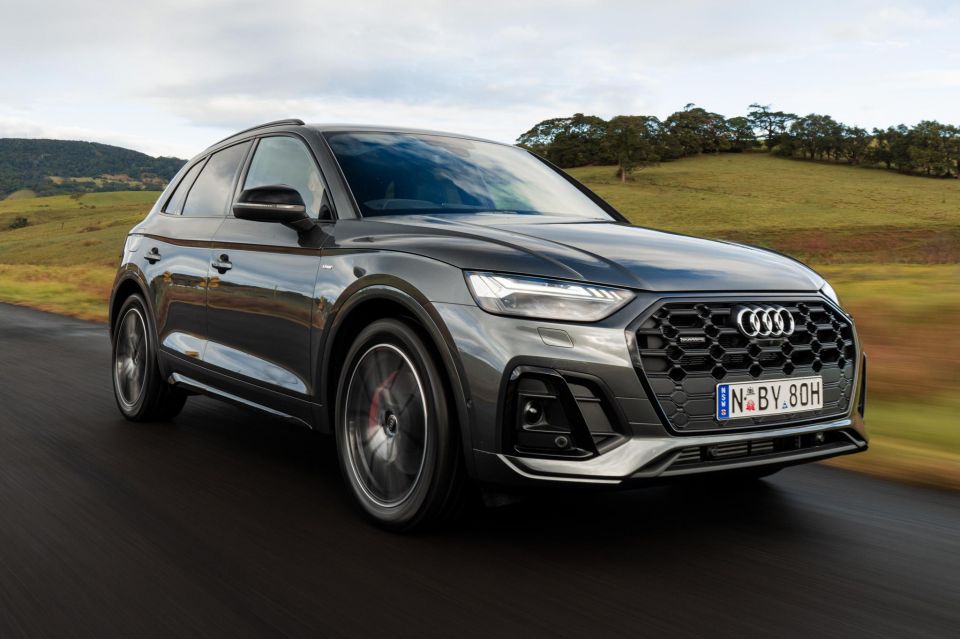
Throughout my time with the Q5 I tried out as many different ways to drive, charge and experience it as possible, which means it might not be directly comparable to how an owner would use their car.
Starting up the car is typically a silent affair with a press of the start button producing a chime or two. It may take just a bit to actually find where the start button is, as it’s located at the front of the centre console and not on the dashboard.
As you go to set off you’ll also need to acquaint yourself with the gear selector. Its operation, including pressing the button on the knob for park, is very intuitive once you get used to it.
Takeoff in the Q5 55 TFSI e is best described as docile in its standard Auto driving mode. That’s not to call it slow whatsoever – the car is more powerful than an SQ5 – but it’s definitely geared more towards efficiency in everyday driving.
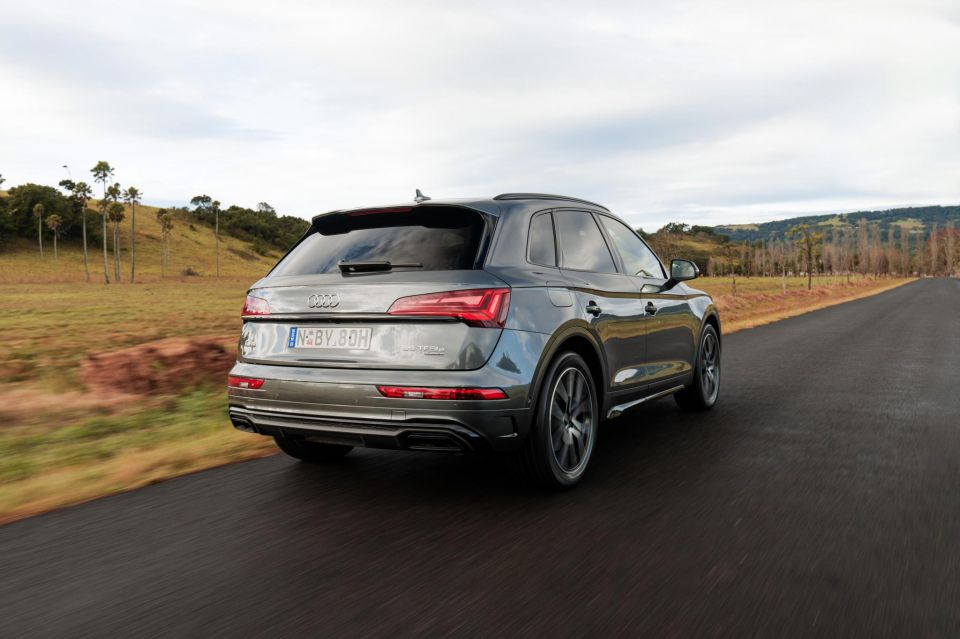
Where expert car reviews meet expert car buying – CarExpert gives you trusted advice, personalised service and real savings on your next new car.
If you’re that way inclined the Q5 55 TFSI e can be properly fast, especially in Dynamic mode. With system outputs of 270kW and 500Nm, you’ll be leaving the majority of the traffic behind from the lights.
Depending on the battery charge level, the car will happily potter around on EV mode as much as possible. It can travel at speeds of up to 135km/h on electric power alone.
I also actually beat the EV-only range claim and achieved 60km in the real world. While this might sound like a praise, a number of more affordable PHEVs offer more EV range.
Like a number of Volkswagen Group plug-in hybrids, the electric motor is mounted between the engine and the transmission.
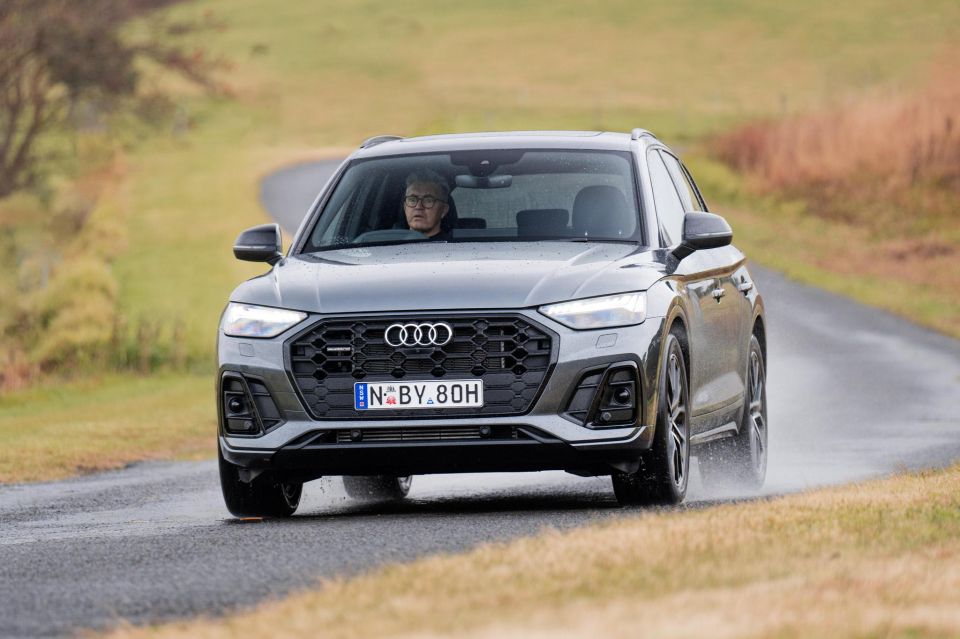
This means the electric motor technically shifts through gears. For the most part it’s seamless, though there is the odd occasion where you can feel a gear shift. This can be a little grating when it happens.
Something that took a bit to get used to is the car’s adaptive regenerative braking system. It’s able to gauge how much regenerative braking should be applied leading up to an intersection by using the car’s sensors and satellite navigation data.
The car can also send a pulse through the accelerator telling you to let the car coast. This is a trippy feeling, but it’s a good help and reminder to drive as efficiently as possible.
When the battery charge runs out the Q5 55 TFSI e will act like more like a Toyota-style hybrid and switch the petrol engine on to assist the electric motor.
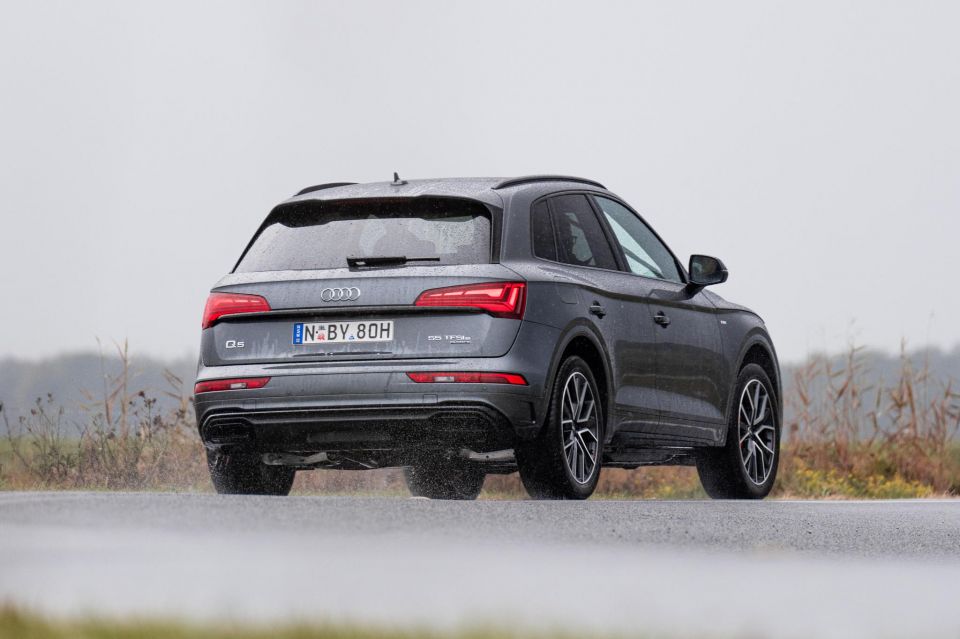
You’ll barely hear or feel when the 2.0-litre turbocharged petrol engine turns on, thanks in part to the stellar noise insulation around the cabin, though there can sometimes be a tiny lull in power delivery when accelerating.
The engine can also rev out the first couple of gears to almost 3000rpm, which feels unnecessary but is ultimately a sign it takes some encouraging for the two-tonne SUV takes a bit to get moving at a brisk pace.
As standard there’s a Type 2 charging port that can only AC charge at a maximum rate of 7.2kW. This isn’t the end of the world however as at this rate it only takes 2.5 hours, or 8.0 hours using a 2.3kW domestic wall plug to fully recharge the battery pack. You’ll be able to plug the car in overnight and wake up with a fully charged battery.
You can also charge up the Q5 55 TFSI e’s battery pack by using the charge mode. This is by far the most inefficient way to charge up the car and is best at highway speeds.
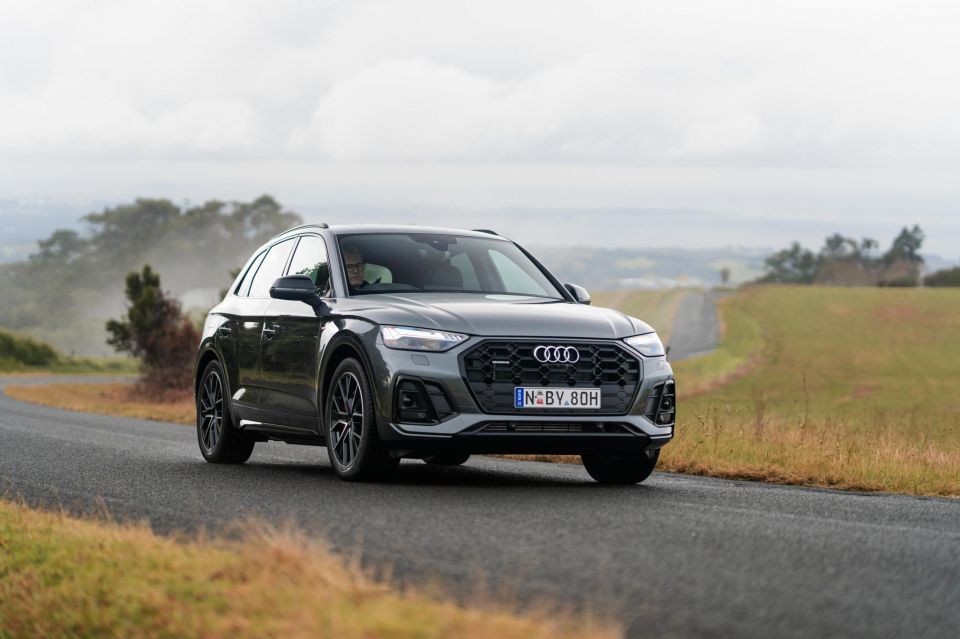
I’d recommend not using this mode at all if you want to maintain a low fuel economy figure. It’s also part of the reason why my observed fuel economy was so much higher than the claim.
The Q5 has light steering which makes low-speed manoeuvring really easy. As standard there are front, rear and side parking sensors, as well as a surround-view camera.
There’s also a semi-autonomous parking assist function that makes parallel and perpendicular parking easier.
Our tester was fitted with the optional air suspension that should really be standard given the asking price. I can’t recommend it more however because it irons out so many rough bumps and makes the car glide on the road.
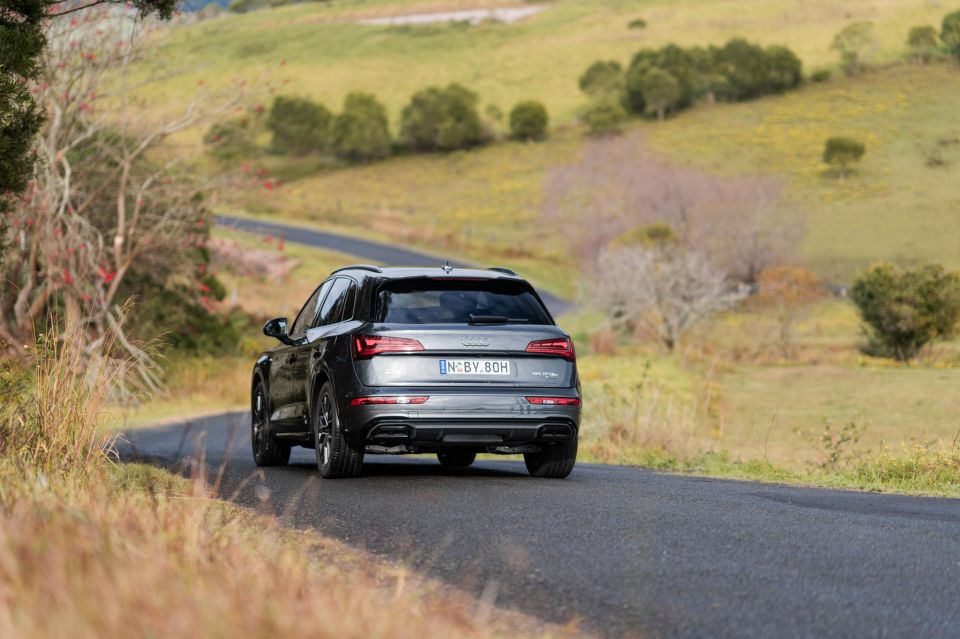
The Comfort mode dials this up to 11. It’s really like driving on a cloud, which is so surprising given the car has 20-inch alloy wheels and weighs 2.0 tonnes.
For some added novelty you can manually raise and lower the car at low speeds. There are also Allroad and Offroad drive modes that jack the air suspension up to make it more ready to head off the beaten path.
Building up speed in the Q5 55 TFSI e comes easily, though acceleration does start to taper off a tad at higher speeds. It’s also worth noting sustained highway speeds is when the electric motor is at its least efficient.
In order to negate this there’s a hold mode that keeps the petrol engine running to maintain the battery’s charge level. If you’re strategic with how you use this mode you can maximise the total amount of distance you can travel on a battery charge and fuel tank.

On the safety and assistance front, the adaptive cruise control system works well. When you change the set speed using the stalk it accelerates or slows down at a gradual rate, which makes for a more comfortable driving experience.
The lane-keep assist function is also fantastic at keeping the car centred in the lane, even with faded lane markings. I don’t often like to use these kinds of systems, but I actually wanted to use it in this car.
Lastly, the optional matrix LED headlights are great. These are so helpful when travelling along rural and regional roads in the dark as you don’t have to worry about dipping your high-beams. Instead you can properly focus on what animal might wander onto the road ahead.
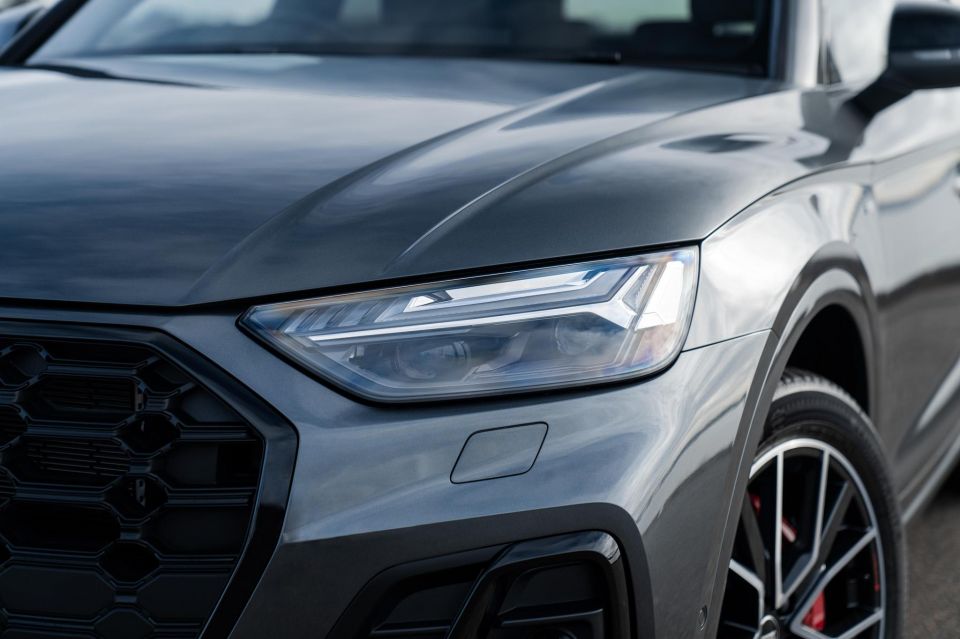

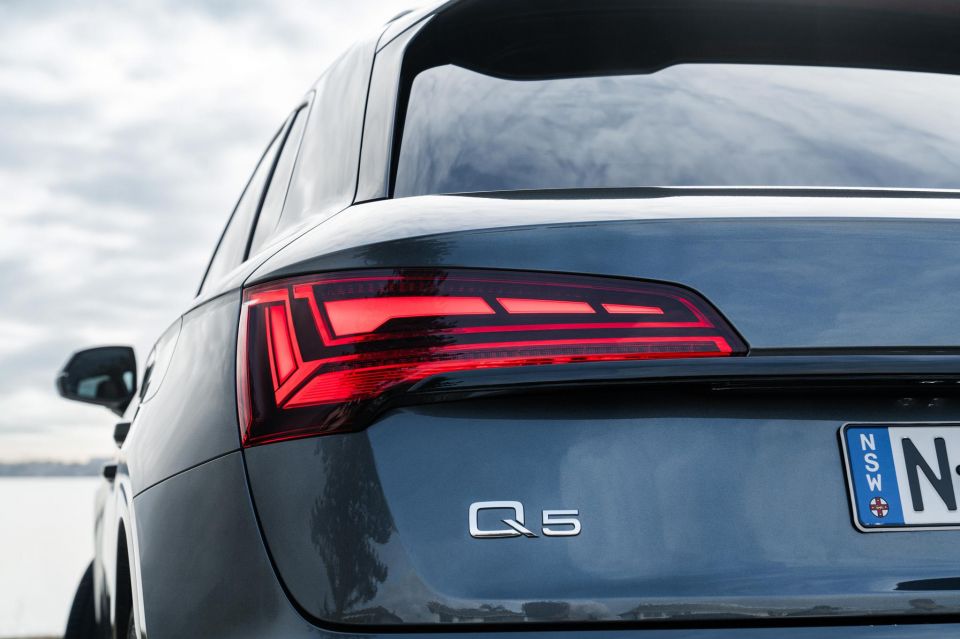

Q5 55 TFSI e quattro S line highlights:
The $4900 Technik package, as fitted to our tester, adds:
Other optional extras fitted to our tester include the $4400 adaptive air suspension, $1300 black exterior styling package, and the $1990 Daytona grey pearl effect paint.
The Audi Q5 and SQ5 range received a five-star ANCAP safety rating based on testing of the pre-update model, but this rating expired on January 1, 2024.
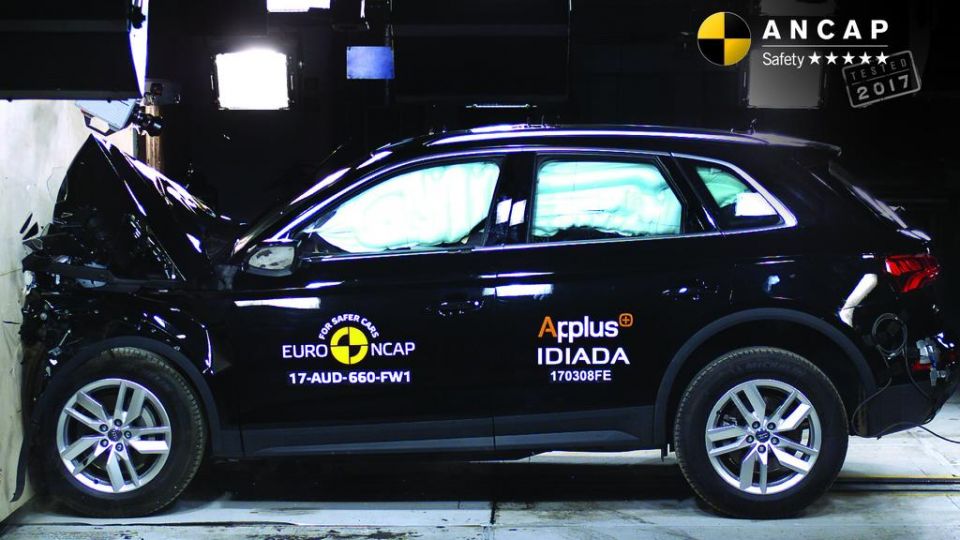
It scored 93 per cent for adult occupant protection, 86 per cent for child occupant protection, 73 per cent for pedestrian protection, and 58 per cent for safety assist.
Standard safety features include:
Q5 Sport adds:
The Audi range is covered by a five-year, unlimited-kilometre warranty in Australia.
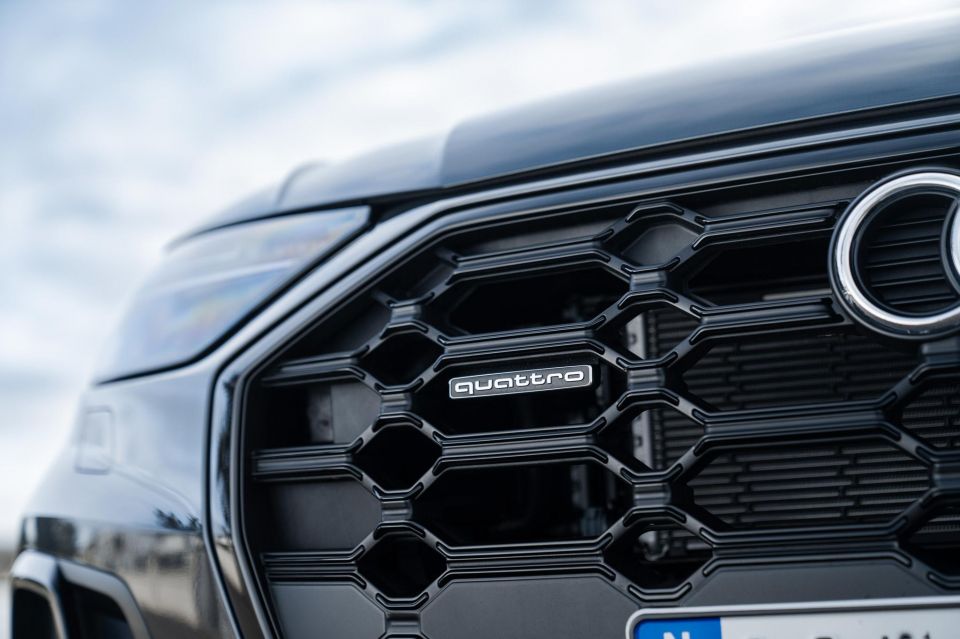
Maintenance is required every 12 months or 15,000 kilometres – whichever comes first.
Audi offers five-year Genuine Care Plans that cover up to 75,000km. As with the regular Q5 TDI and TFSI range, the service plan costs $3520.
The Audi Q5 mightn’t be as overtly flashy as some of its other premium German rivals, but there’s definitely an appeal in having a car that has understated luxury tones.
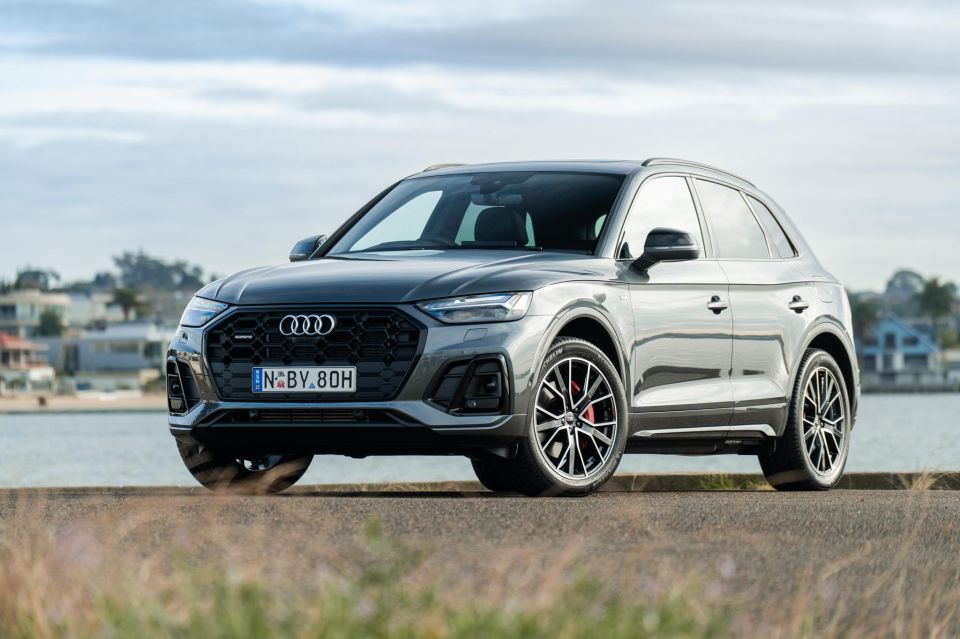
Perceived build quality in the Q5 is among the best I’ve experienced to date, and all the switchgear you interact with inside the cabin is really tactile and satisfying to use. I wish more carmakers would take notes from Audi.
The plug-in hybrid powertrain on test here is refined and can be fantastically quick if you want it to be. That aside, it will only really work for you if you’re looking to go green and have the means to be able to charge it.
If you can’t charge the car however, it’s really hard to justify the $17,200 price premium over the 45 TFSI, especially when the two cars have the same EA888 2.0-litre turbo-petrol engine as a base.
With this in mind, unless you really want a plug-in hybrid I’d suggest looking at the Q5 45 TFSI as it can be optioned up to be virtually identical spec-wise. You’ll also be saving thousands in the process.
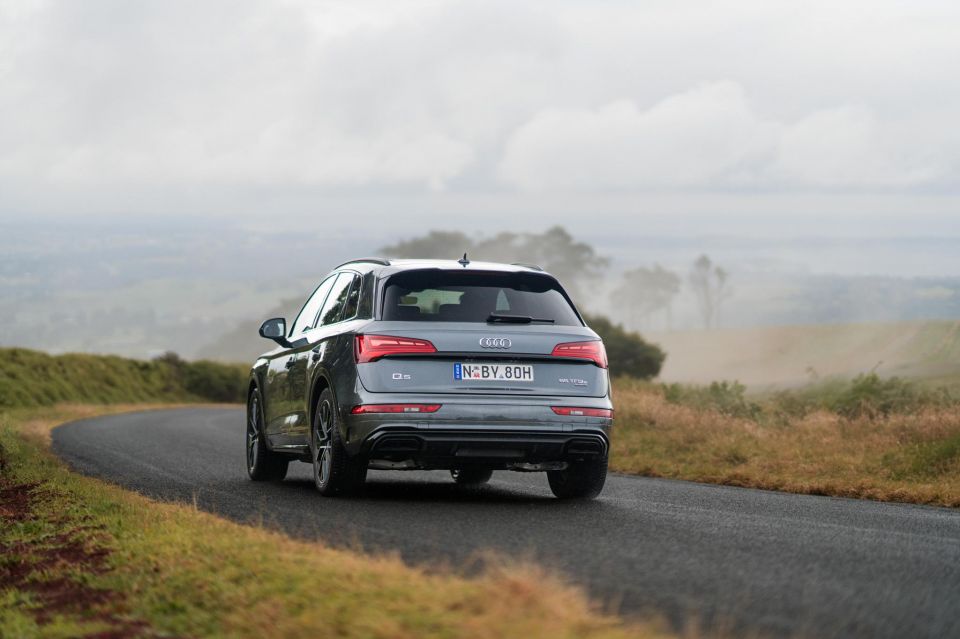
Click the images for the full gallery
BUY: Audi Q5 MORE: Everything Audi Q5
Where expert car reviews meet expert car buying – CarExpert gives you trusted advice, personalised service and real savings on your next new car.
Jack Quick is an automotive journalist based in Melbourne. Jack studied journalism and photography at Deakin University in Burwood, and previously represented the university in dance nationally. In his spare time, he loves to pump Charli XCX and play a bit of Grand Theft Auto. He’s also the proud owner of a blue, manual 2020 Suzuki Jimny.


Andrew Maclean
12 Days Ago
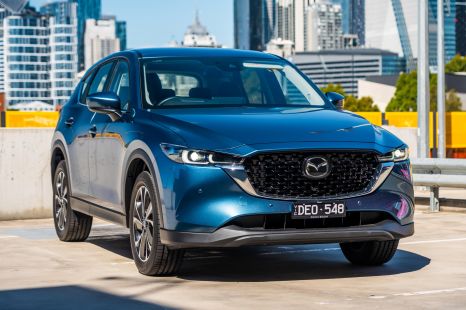

James Wong
8 Days Ago
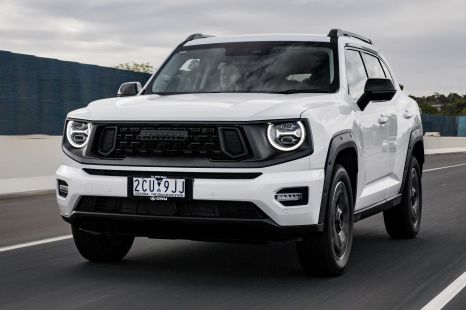

Max Davies
7 Days Ago
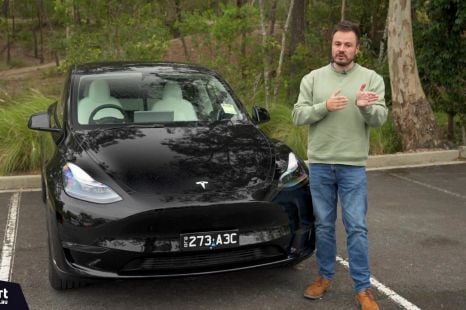

Paul Maric
4 Days Ago
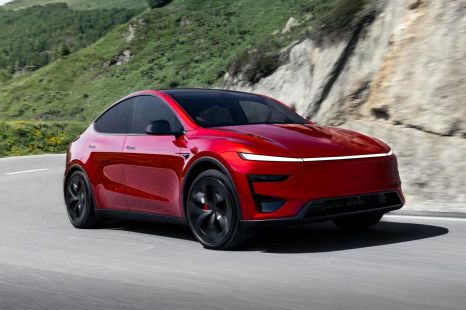

William Stopford
3 Days Ago
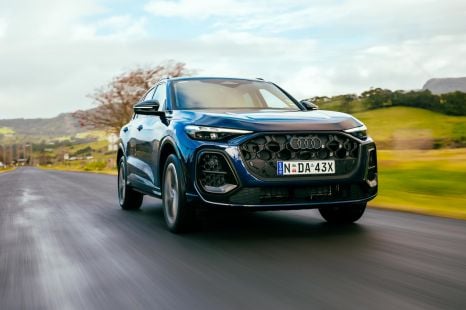

James Wong
2 Days Ago